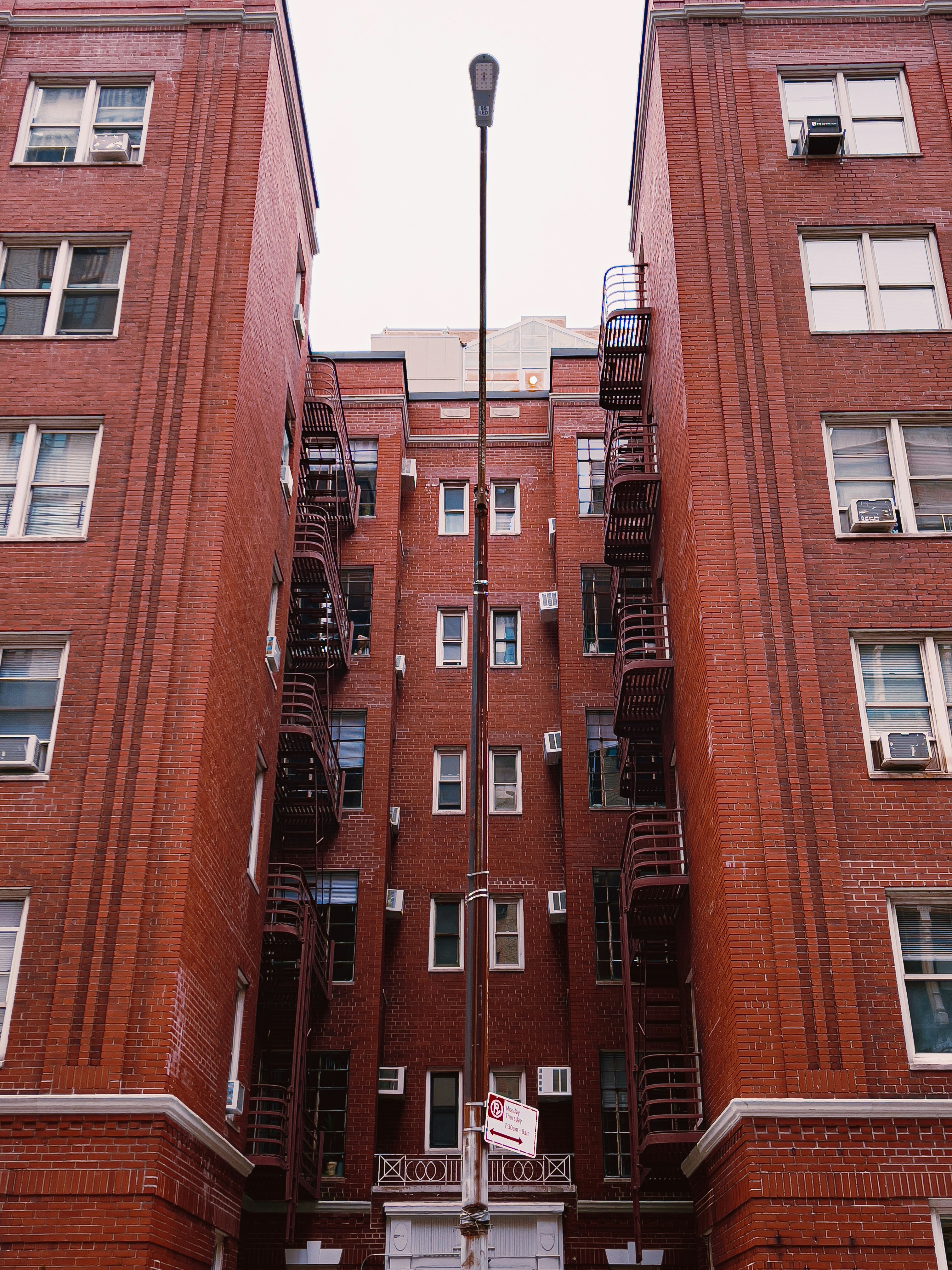
The phone call comes at 4:45 a.m., same as always. Another night, another shooting in Bronzeville. Marquinn McDonald pulls on his boots and heads into the darkness that swallows Chicago's South Side, where he's spent nearly two decades patrolling streets that city officials rarely visit but constantly analyze in crime statistics.
McDonald is a man of many titles—WatchGuard Chicago co-founder, 2nd District Community Commission councilman, dean at It Takes a Village Leadership Academy—but this morning he's simply a father and neighbor responding to violence that data shows is decreasing, even as bullets shatter windows and dreams with ruthless regularity.

"For anyone to say they don't get tired is lying," McDonald says, his voice carrying the weight of countless sleepless nights. "The work is the work, though."
Three miles north, Akilah McCord starts her day as Chief Operating Officer of The Answer Inc., managing autism services that reach families across the city. By 7 a.m., she's already deep into grant reporting, onboarding new staff, and strategizing for programs that could disappear with the next state budget cycle. "Every grant deadline or state budget decision directly affects the stability of the people we serve," she explains. "We live grant to grant."
On the South Side, Chris Davis opens his barbershop, where conversations flow as freely as the clippers through his clients' hair. An educator by morning and entrepreneur by evening, Davis represents the hustle that defines Black Chicago—multiple jobs, multiple roles, all aimed at creating permanence in a city that seems designed to undermine it. "I'm here to mentor these youth, guide them in the right direction," he says. "Making sure that they're in a safe haven environment because there's so much stuff going on in the city of Chicago."
These three voices—activist, executive, entrepreneur—capture the breadth of Black Chicago's crossroads moment. From Bronzeville to the boardroom, from the barbershop to the ballot box, Black Chicagoans across all economic sectors are navigating converging crises that threaten not just individual survival, but the fabric of communities that have anchored the city for generations.
The New Economics of Displacement
Lake Meadows towers over Bronzeville like a monument to promises broken and renewed. The residential complex, home to predominantly Black families since the 1950s, has become ground zero for a displacement crisis that reaches far beyond individual evictions.
"They raised parking from $5 a month to $50 overnight," McDonald explains, documenting what residents describe as systematic efforts to force out longtime tenants. "Elders, single mothers with children—they're being pushed out because they can't afford it. And you know what they want to do? Make it student housing."
The complaint mirrors a pattern playing out across historically Black neighborhoods, where property management companies exploit legal gray areas to clear buildings for higher-paying demographics. McDonald's WatchGuard Chicago has documented cases where tenants received illegal five-day eviction notices, with many moving before learning their rights.
But this isn't just about poverty. Akilah McCord, despite her executive position, faces similar precarity. "Nonprofit funding cycles mean security is never absolute," she notes. Even C-suite professionals live "grant to grant," their security tied to political winds and budget negotiations they cannot control.

The numbers support these personal accounts. According to recent analysis, Black Chicagoans face eviction at nearly twice the rate of white renters, with landlords showing less flexibility toward Black families in payment agreements. In Bronzeville specifically, median home prices jumped nearly $200,000 between 2018 and 2022, while the area's median household income remains around $40,700—making homeownership increasingly impossible for the community that built the neighborhood.
"If you are not wealthy and you're a Black person, you cannot buy in Bronzeville," says Michelle Kennedy, a city planning expert who grew up in the area. "And if you inherit property in Bronzeville and you're not wealthy, it's going to be difficult for you to pay the taxes and maintain it."
Policy Promises, Community Realities
Mayor Brandon Johnson's administration has positioned itself as a progressive force for racial equity, signing executive orders on protest rights and proposing $1.25 billion in housing investments. But the gap between City Hall announcements and block-level reality remains vast.
Johnson's 2025 budget includes a controversial $300 million property tax increase, breaking campaign promises while adding financial pressure to residents already struggling with housing costs. The mayor's housing bond proposal earmarks up to $390 million for affordable rental homes, but federal low-income tax credits only require 15 years of affordability—after which housing can return to market rates.
At the state level, Governor J.B. Pritzker announced $250 million to address racial disparities in homelessness, acknowledging that Black Illinoisans are eight times more likely to be unhoused than white residents. Yet implementation remains sluggish. The African American HIV/AIDS Response Act (AAHARA), designed to fund Black-led service providers, saw zero dollars allocated in 2020 despite a $15 million appropriation—while white-led organizations received infrastructure funding for new facilities.
"The real activists aren't getting consistent support," McDonald observes. "The loudest voices aren't always the most authentic."
These funding disparities reflect broader structural issues. Illinois' African American Employment Plan shows incremental progress in state hiring, with 22 CMS Diversity & Inclusion Community Partner interns placed across agencies in 2024. But the program's scale pales compared to the systemic barriers facing Black professionals and entrepreneurs.
McCord's question to city leaders cuts to the heart of the implementation gap: "How will you ensure that job creation and housing policies truly reach the grassroots level, not just large organizations, so small nonprofits and entrepreneurs can sustain themselves and create local jobs?"
The Violence Intervention Paradox
Chicago's approach to community violence reveals another layer of policy contradictions. The Government Alliance for Safe Communities (GASC) announced an unprecedented $100 million in public funding for Community Violence Intervention (CVI) programs in 2025, with $20 million allocated through Cook County's initiative.
Yet McDonald's nightly patrols continue because formal systems remain inadequate. "The police department has always complained about being short-staffed," he explains. "So we took it upon ourselves to step out as community members."
WatchGuard Chicago represents a model of community self-governance born from necessity. When violence erupted in August, McDonald's team was collecting shell casings while police struggled to secure the scene. "You want to know who picked up the shell casings that day? We did. And this isn't the first time."
The organization's approach emphasizes de-escalation over enforcement. "If it's two folks arguing, if it's a fight breaking out, we can have the numbers and offer support," McDonald explains. But when guns appear, "we would generally let that be the police."
This hybrid model—community intervention backed by strategic police cooperation—has shown results. McDonald credits block club formation with reducing violence in his area, though recent shootings in Bronzeville highlight ongoing challenges.
The $100 million CVI investment represents recognition of community-led solutions, but funding often flows to established organizations rather than grassroots groups doing daily intervention work. Meanwhile, McDonald continues his 4:45 a.m. routine, unpaid and exhausted, because "this is the work."

Generational Fractures
For longtime residents like McDonald, who grew up in Chicago and has witnessed decades of change, the current moment feels both familiar and unprecedented. "Chicago has gumption," he says, using a word that captures the city's particular brand of resilience. "There ain't nothing like Chicago sports fans. Nothing like summertime Chi-Town."
But that gumption now faces challenges that transcend individual determination. McCord identifies a generational shift affecting young people across economic levels: "Young people face higher costs of living, mental health pressures, and social media comparisons that I never had. For many, the path to stability feels less certain despite more education and talent."
Davis, working with youth in his dual roles as educator and barber, sees these pressures firsthand. "There's so much stuff going on in the city of Chicago," he says, describing his work creating "safe haven environments" where young people can develop without constant threat.
The data supports these observations. Despite Chicago's status as the third-largest city and major economic hub, Black residents face structural barriers that have only intensified. According to the Chicago Metropolitan Agency for Planning, median household income for white Chicagoans reaches $89,050, compared to $27,713 for Black Chicagoans—a disparity that affects everything from housing access to business capital.
"Home in Chicago means legacy and resilience—a place where my children can grow roots and carry forward values of service," McCord explains. "Over time, though, it has become more expensive and more segmented, making it harder for working families to stay in neighborhoods they love."
The Business of Survival
Small business ownership represents both opportunity and vulnerability in Black Chicago's economic landscape. Charisse Bennett, running a service-based consultancy, faces the impossible calculation that defines entrepreneurship in economically constrained communities: "Do I set my price to what I know it's worth, or do I set a lower price because I know the work helps people? When eggs are $4 per carton, feeding your family ranks higher than building your confidence."
Bennett's dilemma reflects broader challenges facing Black entrepreneurs. Since 2020, she's observed "greater appreciation for small businesses and grassroots organizations, but also donor fatigue. People care, but they're more cautious with their giving and want to see clear, measurable impact."
This tension between community need and market sustainability affects every sector. McCord's nonprofit work illustrates the phenomenon at a larger scale—organizations provide essential services but remain perpetually unstable due to funding structures that prioritize short-term metrics over long-term community building.
The ripple effects extend beyond individual businesses. As McDonald notes, "Everything's about profit, profit, profit, and you really don't give a damn about the people, people, people." When community resources are evaluated purely through market logic, essential but unprofitable services disappear—from violence intervention to youth mentorship to elder care.
Davis bridges this gap through his barbershop, where community building and economic activity intersect. "I definitely put in work at the barbershop, getting to know the clients and getting a feel for who they are, building relationships and networking with them," he explains. The shop functions as an informal community center, information hub, and economic anchor—roles that formal institutions often fail to fulfill.
Federal Pressure, Local Resistance
The Trump administration's renewed focus on Chicago has added federal pressure to local challenges. President Trump's threats to deploy National Guard troops to address crime statistics that don't support his claims have prompted Mayor Johnson to sign executive orders protecting resident rights and limiting federal intervention.
"Trump wants to come to Chicago not because of violence, but because he's targeting cities with Black mayors," McDonald argues. "The writing's on the wall—there's a racial divide in this country that's never gone anywhere."
Chicago doesn't rank among the top ten most violent cities nationally, yet it remains a political target. McDonald sees this attention as part of broader efforts to destabilize Black political leadership and economic progress.
The federal focus has intensified local debates about immigration and resource allocation. Since 2022, Chicago has allocated over $310 million to support approximately 40,000 asylum seekers, sparking tensions in communities already struggling with housing and service shortages.
But housing advocates argue these tensions miss the real issue. "We have two crises—a migrant crisis and a housing crisis," explains one organizer. Before the first bus arrived from Texas, Chicago already faced a shortage of 120,000 affordable housing units.
The scapegoating obscures systemic problems that predate recent immigration. "Poor people were under stress and pressure, and when they see somebody getting resources while they've been denied space, they blame those folks," notes community leader Curtis Washington. "Both Black and brown people in these situations are suffering."
Structural Solutions, Grassroots Implementation
Despite overwhelming challenges, innovative approaches are emerging from community-led initiatives. McDonald's WatchGuard Chicago has formed alliances with neighboring block clubs—Evans, Langley, St. Lawrence—creating networks that address violence, property crime, and community safety holistically.
"Before we formed a block club, shootings were routine," McDonald explains. "After, violence dropped for years. We recover stolen property, shield each other when police are late, and sometimes refuse to press charges—instead offering mentorship and jobs."
These restorative justice approaches challenge traditional law enforcement models. When young men attempted to resume drug sales in McDonald's area, the block club intervened directly. "We didn't call police first—we talked. Since that day, nothing. The violence, theft, risk—it disappeared."
McCord identifies similar innovation in nonprofit management, where organizations develop hybrid funding strategies and shared resource models to navigate unstable budgets. "Leaders and advocates—state legislators who fight for appropriations, community pastors, nonprofit founders—have directly influenced my ability to keep programs alive and expand services."
The challenge lies in scaling these community-driven solutions without losing their grassroots character. McDonald warns against co-optation by larger organizations that "get resources but don't do the work."
The Bronzeville Blueprint
Bronzeville's transformation offers a case study in both gentrification pressures and community resistance. The neighborhood that once housed the Jones brothers' numbers operation—the precursor to state lotteries—now hosts developments with half-million-dollar price tags alongside persistent affordable housing needs.
McDonald credits Alderman Pat Dowell with maintaining mixed-income housing options, but notes the delicate balance required. "She's done a great job keeping affordability in Bronzeville, to the extent she can," McDonald says. The Rosenwald Courts development exemplifies this approach, offering apartments from $950-$1,115 while providing space for Black-owned businesses.
Yet preservation efforts face structural limits. Federal tax credit programs require only 15 years of affordability, after which housing can return to market rates. Without permanent affordability mechanisms, today's mixed-income developments become tomorrow's gentrification drivers.

"If the number of wealthy white people who want to live in Bronzeville exceeds the number of wealthy Black people who want to live there, it will no longer be a Black neighborhood," warns Michelle Kennedy. "Plain and simple."
The stakes extend beyond individual displacement. "We can't allow outside forces that do not mean well for our people, our history, and our culture to come into our communities and remove us without consideration," McDonald argues. "We have to fortify relationships and put fire under leaders to get resources we need—not just beautify, but amplify Bronzeville so people who've grown up, lived, built, and been birthed here can continue to stay."
The Political Crossroads
As McDonald considers a potential run for higher office, he embodies the tension between grassroots organizing and electoral politics. His experience illustrates both the necessity and limitations of traditional political engagement.
"We've built relationships with our CAPS office, districts, commanders," McDonald explains. "We report, email, send letters—do everything they ask. But when constituents tell you kids are walking around with guns for four hours without police response, the system isn't working."
The disconnect between political promises and community needs affects every level of government. State DEI programs hire 22 interns while housing crises displace thousands. Federal CVI funding reaches $100 million while nightly violence continues. City budgets increase property taxes while affordable housing shrinks.
McCord's question to city leaders remains unanswered: How do job creation and housing policies reach grassroots organizations and entrepreneurs rather than just large institutions?
McDonald's proposed solution emphasizes community accountability over electoral cycles. "Follow the money, but also follow the work," he advises. "Some get resources, but it's block clubs, mentors, and teachers who drive lasting change."
Tomorrow's Chicago
The voices in this investigation represent different sectors of Black Chicago, but their experiences converge on common themes: systemic underfunding, policy implementation gaps, and community-driven solutions that emerge despite—not because of—institutional support.
McDonald continues his pre-dawn patrols, building the safety infrastructure that official budgets promise but rarely deliver. McCord navigates funding cycles that threaten program certainty while serving families who need consistent support. Davis creates mentorship opportunities in spaces where young people feel safe, using his own resources to fill gaps in social services.
Charisse Bennett calibrates her business model between community need and economic survival, embodying the impossible choices facing Black entrepreneurs. Anonymous sources across sectors—from municipal employees to nonprofit workers to small business owners—describe similar pressures: doing essential work without adequate resources, maintaining hope despite systemic failures.
The solutions emerging from these conditions challenge conventional policy approaches. Block clubs provide safety services that police departments cannot deliver. Barbershops function as community centers that formal institutions fail to create. Nonprofit leaders develop funding strategies that transcend traditional grant cycles.
"Cornered" captures both crisis and creativity—communities pressed to breaking points that generate innovative responses. The question facing Black Chicago isn't whether residents can survive these converging pressures, but whether the broader city can learn from community-driven solutions before they're displaced or co-opted.
McDonald's reflection offers both warning and possibility: "We are in such a dire state as a people and as a city. You gotta seriously over-commit to really get things done. We don't have time to play around."
The work continues at 4:45 a.m., in grant applications and barbershop conversations, in block club meetings and policy hearings. Black Chicago remains cornered by forces beyond individual control, but not without agency, organization, or hope.
As McCord notes, "The path to stability feels less certain despite more education and talent." But uncertainty doesn't preclude action. In classrooms and communities, boardrooms and barbershops, Black Chicago continues building the infrastructure for survival—and perhaps, eventually, for something more than mere survival.
The morning call will come again tomorrow. McDonald will pull on his boots, Davis will open his shop, McCord will navigate another funding cycle, and Bennett will calculate worth versus affordability. The city beats on—heartbroken but never surrendered—at the crossroads of crisis and possibility.